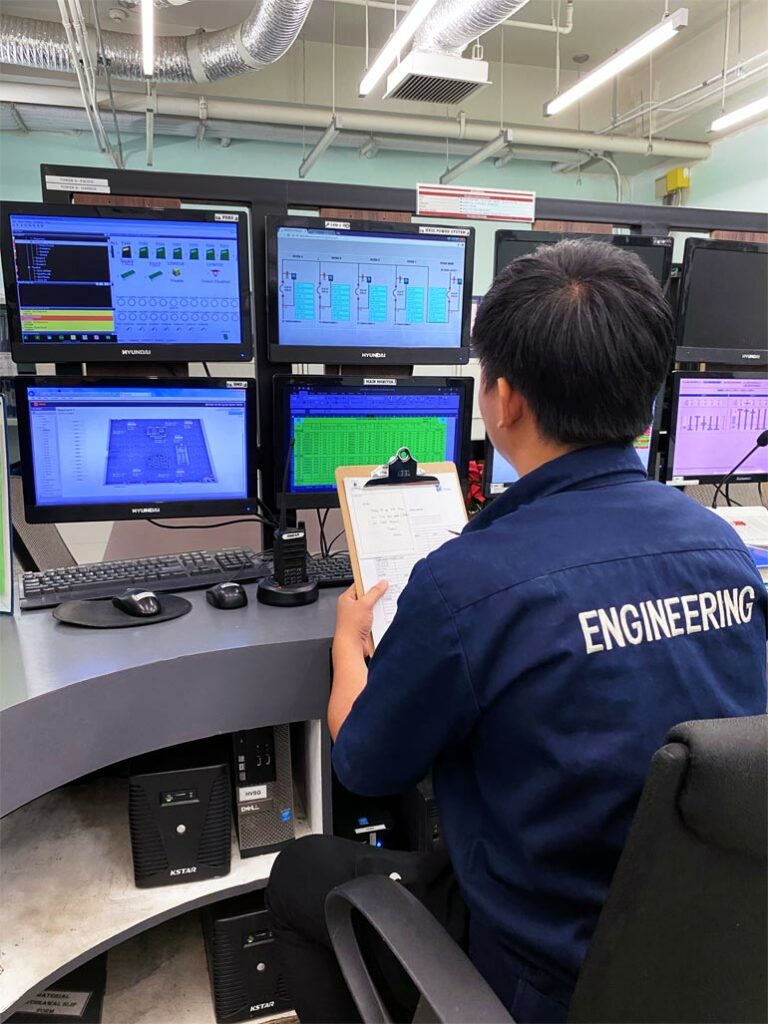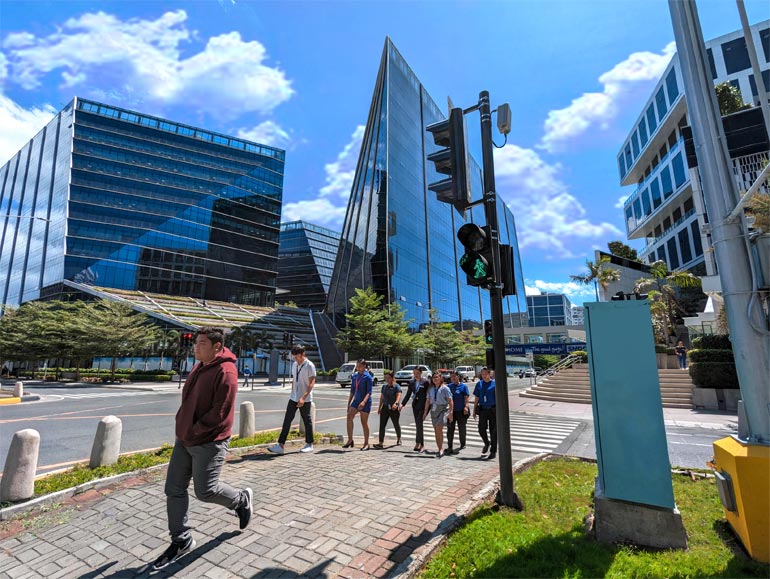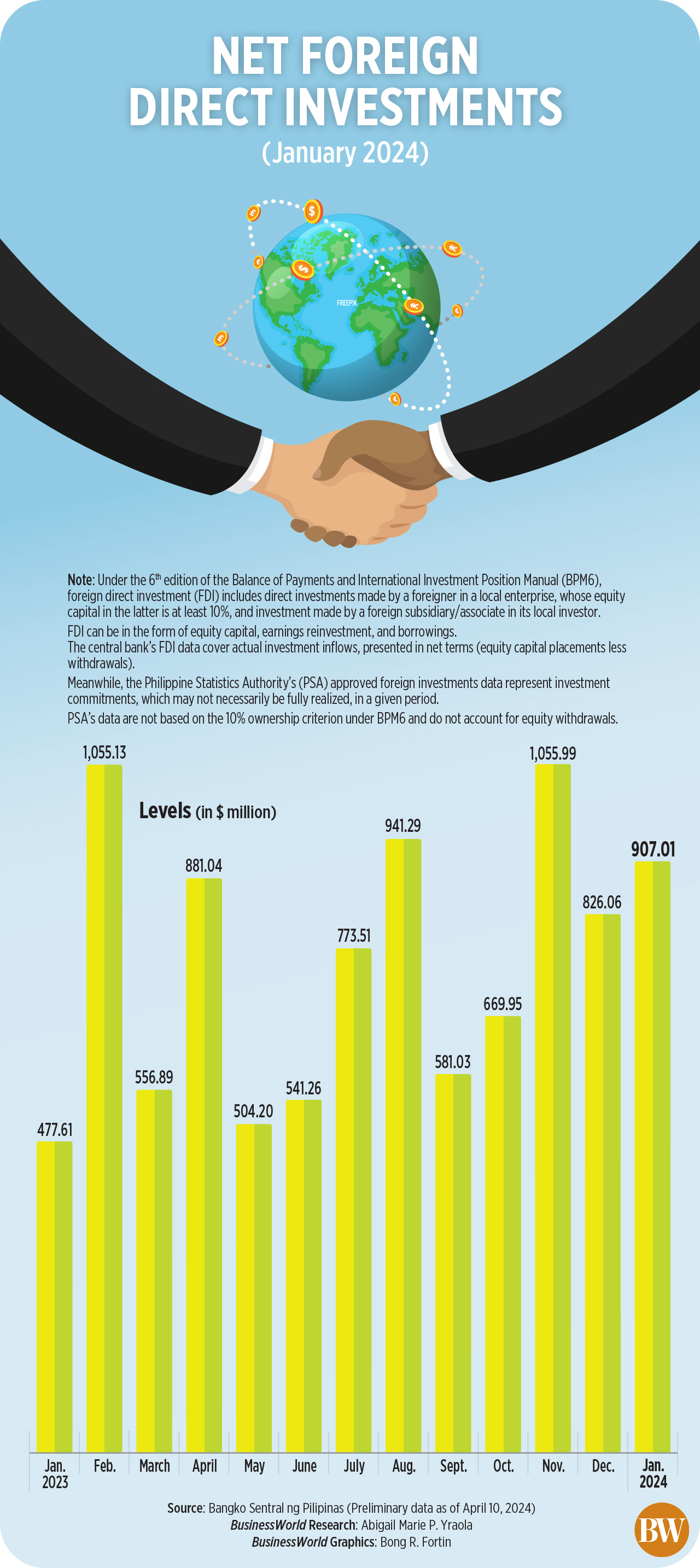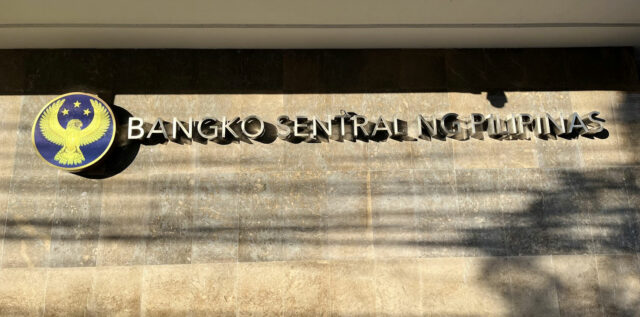PHILIPPINE President Ferdinand R. Marcos, Jr. on Wednesday said his government is working double time to fast-track railway projects as traffic gridlocks in the capital region alone cost billions of pesos in lost opportunities per day.
“Anyone can use trains, that’s why it’s the only solution,” he said in Filipino during a town hall meeting on the country’s traffic problems, noting that the National Government seeks to shift the mode of transportation to rails from buses, jeepneys, and private cars.
Mr. Marcos reported the progress of ongoing railway projects, including the proposed Metro Manila Subway, which he said was now 41% complete.
The completion rates for the two components of the 147-kilometer North-South Commuter Railway (NSCR) Project — the Tutuban-Malolos and Malolos-Clark sections — have already hit over 50%, he said.
Mr. Marcos said the proposed NSCR’s South Extension, which connects Manila to Calamba, Laguna, was already 38%.
The completion rate for the Light Rail Transit (LRT) Line 1 Cavite Extension stood at 80%; 85% for the rehabilitation and maintenance of the Metro Rail Transit (MRT) Line 3; and 83% for the Unified Grand Central Station.
The MRT Line 7, which runs from Quezon City to San Jose del Monte in Bulacan province, is 67% completed.
Citing a study conducted by the Japan International Cooperation Agency, Mr. Marcos said traffic congestion in the capital region costs the Philippine economy at least P3.5 billion daily or P1.27 trillion annually.
“If we do not do anything, the cost will increase to P9 billion for each day,” he said.
“The only solution to this is the mass transit system, that’s why we are fast-tracking (the projects). That’s our priority in terms of infrastructure against traffic congestion.”
In a statement, the Department of Public Works and Highways (DPWH) outlined its traffic decongestion plan which focuses on the improvement and expansion of the national road network by building additional by-passes, diversion roads, expressways, flyovers, interchanges and underpasses.
“DPWH will continue to develop and conduct further study on infrastructure projects that will alleviate traffic in Metro Manila in coordination with various stakeholders,” Public Works Secretary Manuel M. Bonoan said in a statement.
However, Terry L. Ridon, convenor of InfraWatchPH, said the government should clarify how it is “working double time” to fast-track railway projects.
“Is it expanding personnel working on the various project sites or is it now expediting and expanding the orders for construction materials for these projects?” he said in a Facebook Messenger chat.
“If these things are not yet currently being done, ‘working double time’ does not really mean anything as yet.”
At the same meeting, Mr. Marcos said he wants local government units (LGUs) in Metro Manila to come up with common traffic management to lessen confusion among stakeholders.
“We must consider the road system and the mass transit system in Metro Manila as one system. And one system feeds into another,” he said.
Mr. Marcos said his government seeks to expand areas allowed for the country’s 15 million motorcycle riders.
“We’re trying to see what are the other areas, high-traffic areas, where our motorcycle services could expand.”
He said the government is also considering barring road works during daytime to avoid heavy traffic. He also expressed concern over the prevalence of vehicles plying the roads without necessary permits.
NO EXTENSION
Mr. Marcos, meanwhile, said he would no longer extend the deadline for the franchise consolidation under the government’s Public Utility Vehicle Modernization Program (PUVMP), which was already extended in late January.
“There will be no more extensions under the PUVMP. This extension is final,” Transportation Secretary Jaime J. Bautista said, adding that consolidation of transport workers into a cooperative will help address traffic congestion.
The Land Transportation Franchising and Regulatory Board earlier said 190,000 public utility vehicles units, including UV Express, jeepneys, mini-buses, and buses, have availed of consolidation.
Mr. Marcos also cited the need to decongest Metro Manila by creating more regional centers and creating more roads outside the capital region, which is home to over 13 million people.
The President cited an interlink bridge project that seeks to cut travel time from Bataan in Central Luzon to Cavite to just 30-45 minutes from 4 to 5 hours.
Mr. Bautista said the first phase of the proposed Bataan-Cavite Interlink Bridge is expected to begin soon, amid questions on its progress after the National Economic and Development Authority (NEDA) changed the cost and the timeline for the project.
The project would cost P219.3 billion, up from the initial cost of P175.6 billion, NEDA said in October last year, adding that the implementation period may reach December 2029. The project was earlier projected to begin construction in late 2023.
“The procurement would already start,” Mr. Bautista told reporters on the sidelines of the town hall meeting.
Mr. Bonoan said the DPWH will be bidding out the first two out of the six segments by the first semester. The next two segments may be bid out in the third quarter.
Traffic solutions have so far been focused on Metro Manila, Mr. Marcos said, citing the need to craft similar solutions for other urban centers such as Cebu City in central Philippines and Davao City in the country’s south.
NEDA Secretary Arsenio M. Balisacan said the government encourages businessmen to invest in key areas outside the capital region such as Cavite, Laguna, and Batangas.
He also cited Bulacan, Pampanga, Laoag, Metro Cebu, Metro Davao, Cagayan de Oro, Iloilo, Bacolod, and General Santos City.
Public services in the countryside such as healthcare should also be improved to lessen the demand for services in Metro Manila, the NEDA chief said. — Kyle Aristophere T. Atienza with inputs from Ashley Erika O. Jose



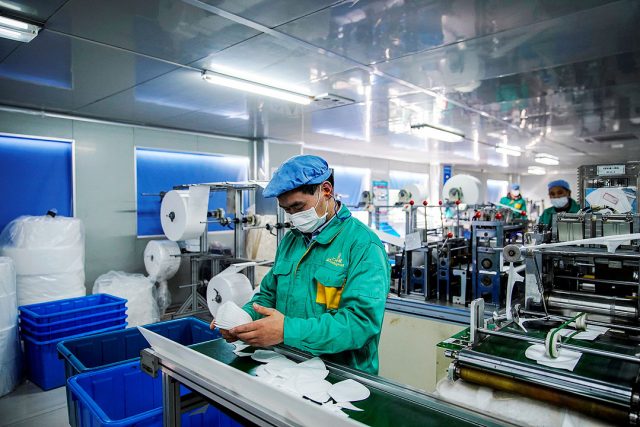

 Heating the exhibition grounds is the highly anticipated Culinary Challenge Competition, where students and faculty members from 36 culinary schools and universities nationwide will go head-to-head in a friendly battle of skill, creativity, and talent.
Heating the exhibition grounds is the highly anticipated Culinary Challenge Competition, where students and faculty members from 36 culinary schools and universities nationwide will go head-to-head in a friendly battle of skill, creativity, and talent. A series of captivating and fiery cooking demonstrations will also be featured on stage throughout the event, where renowned chefs showcase their techniques and share their culinary secrets with eager audiences.
A series of captivating and fiery cooking demonstrations will also be featured on stage throughout the event, where renowned chefs showcase their techniques and share their culinary secrets with eager audiences. Looking for more? Attend a lineup of informative seminars and workshops simultaneous to the three-day event, including “Crafting Success: the Art and Business of Mixology and Bartending” by Evolve University Class,
Looking for more? Attend a lineup of informative seminars and workshops simultaneous to the three-day event, including “Crafting Success: the Art and Business of Mixology and Bartending” by Evolve University Class,  The 16th Philippine Food Expo not only celebrates the rich culinary heritage of the Philippines but also serves as a platform for networking, collaboration, and inspiration within the food industry. With its engaging activities, mouthwatering offerings, and vibrant atmosphere, the Expo is expected to leave a lasting impression on all who are set to attend, reaffirming the Philippines’ position as a culinary destination of choice. Pre-Register online until March 29, 2024 to avail a discounted entrance fee or walk-in during the event days on April 12, 9 a.m. to 7 p.m. and from April 13 to 14, 10 a.m. to 7 p.m.
The 16th Philippine Food Expo not only celebrates the rich culinary heritage of the Philippines but also serves as a platform for networking, collaboration, and inspiration within the food industry. With its engaging activities, mouthwatering offerings, and vibrant atmosphere, the Expo is expected to leave a lasting impression on all who are set to attend, reaffirming the Philippines’ position as a culinary destination of choice. Pre-Register online until March 29, 2024 to avail a discounted entrance fee or walk-in during the event days on April 12, 9 a.m. to 7 p.m. and from April 13 to 14, 10 a.m. to 7 p.m.
